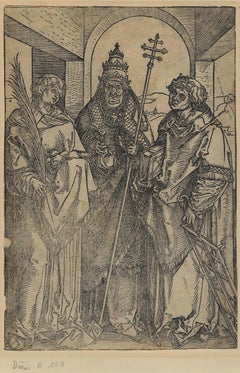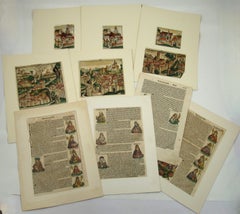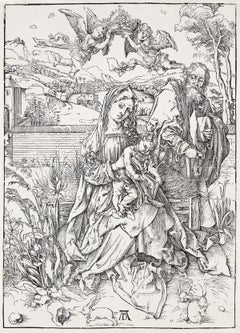15th Century and Earlier Figurative Prints
to
2
4
2
1
1
3
3
4
1
1
Overall Height
to
Overall Width
to
2
1
5
3
2
2
2
1
1
1
3,543
6,286
22,243
7,137
284
544
1,109
1,044
1,051
1,632
3,012
4,574
2,489
1,191
3,040
1
1
1
5
1
Period: 15th Century and Earlier
Father Stefan Fridolin, "Schatzbehalter" (Treasury of the True Riches
Located in Fairlawn, OH
Father Stefan Fridolin, "Schatzbehalter" (Treasury of the True Riches of Salvation): The 30th Figure - Astrological Diagram with Scene of the Nativity
Woodcut, 1491
Unsigned, as issued
Published by Anton Koberger
Diagram has Zodiac signs on outer ring, planets in the lower registers, and Nativity in the center.
Condition: Very good for a 15h century woodcut, with the usual slight age stains
Sheet size: 11 1/2 x 8 1/4 inches
Wogelmut was the teacher of Albrecht Durer and employed young Durer in many project of the last decade of the 15th century.
Michel Wolgemut Biography
Wolgemut trained with his father Valentin Wolgemut (who died in 1469 or 1470) and is thought to have been an assistant to Hans Pleydenwurff in Nuremberg. He worked with Gabriel Malesskircher in Munich early in 1471, leaving the city after unsuccessfully suing Malesskircher's daughter for breach of contract, claiming she had broken off their engagement. He then returned to his late father's workshop in Nuremberg, which his mother had maintained since Valentin's death.
In 1472 he married Pleydenwurff's widow and took over his workshop;[3] her son Wilhelm Pleydenwurff worked as an assistant, and from 1491 a partner, to Wolgemut. Some consider Wilhelm a finer artist than Wolgemut, however he died in January 1494, when he was probably still in his thirties. Wilhelm's oeuvre remains unclear, though works in various media have been attributed to him.
Woodcuts
Michael Wolgemut, Danse Macabre, 1493
Two large and copiously illustrated books have woodcuts supplied by Wolgemut and his stepson Wilhelm Pleydenwurff; both were printed and published by Germany's largest publisher, the Nuremberger Anton Koberger, who was also Dürer's godfather. The first is the Schatzbehalter der wahren Reichthumer des Heils (1491); the other is the Historia mundi, by Schedel (1493), usually known as the Nuremberg Chronicle...
Category
Old Masters 15th Century and Earlier Figurative Prints
Materials
Woodcut
Samson Killing the Lion
Located in Zürich, CH
The woodcut is listed as Bartsch: 2, Medes: 107d.
Upon returning from his 1495 trip to Italy, Albrecht Dürer produced large woodcuts of unprecedented complexity culminating in his S...
Category
15th Century and Earlier Figurative Prints
Materials
Woodcut
The Golden Calf - Nuremberg Chronicle, (528 Years Old)
Located in Santa Monica, CA
NUREMBERG CHRONICLE, 1493
THE GOLDEN CALF (THE CALF OF GOD) 1493
Woodcut. from "Liber Chronicarum." Printed by Anton Koberger text by Hartmann Sc...
Category
Old Masters 15th Century and Earlier Figurative Prints
Materials
Woodcut
Quartet No. 1
Located in Kansas City, MO
Eugene Larkin
Quartet No. 1
Woodcut in two colors
Signed and titled by hand
Size: 20 x 29.5 inches
COA provided
Eugene Larkin (1921-2010)
The late Eugene Larkin was an artist who worked in the Twin Cities area for many years and needs little introduction. His works have been shown, collected and appreciated by numerous galleries, museums and collectors throughout the United States.
Larkin was influential both as an artist and as a teacher. He taught at the Minneapolis College of Art and Design between 1954 and 1969, where he was head of printmaking and Chairman of the Division of Fine Arts. From 1969-1991 he was a professor in the Design Department at the University of Minnesota.
Eugene Larkin, a lithographer, teacher and artist who left behind scores of works, some of them in the permanent collections of the Library of Congress and the Museum of Modern Art. He was considered an early promoter of lithography education, Larkin introduced it into arts programs while teaching at the Minneapolis College of Art and Design and the University of Minnesota. He held a prominent place in the art world through decades of working and teaching in Minneapolis. His work depicted a wide range of subjects, from musicians to nature, including a series of woodcuts based on William Blake's ""Songs of Innocence and Experience."
Larkin also wrote a textbook, ""Design: The Search for Unity."" It was his work with lithography, an 18th-century printmaking process, for which he was best known.
His last local exhibit was a retrospective at The University of Minnesota Weisman Museum in 2005. ""Sometimes I start the artistic process from a literary source - Adam and Eve, the Egyptian nature gods, or classical Greek themes but sometimes I start from nature. Trees have always been a favorite subject. I see trees as people, as vertical objects...
Category
Modern 15th Century and Earlier Figurative Prints
Materials
Woodcut
Bildnis mit florentiner Hut. - Original Etching by Hans Thoma - 1900
By Hans Thoma 1
Located in Roma, IT
Bildnis mit florentiner Hut. is a beautiful black and white etching on cream-colored and laid paper, realized in 1898 by Hans Thoma.
Monogram and Date on p...
Category
Symbolist 15th Century and Earlier Figurative Prints
Materials
Etching
The Garden of Love (after Peter Paul Rubens [1577-1640]
Located in Fairlawn, OH
Each of the two sheets is signed in the plate lower right
Provenance:
Swedish Royal Family
References And Exhibitions:
Fitzwilliam Museum, Rubens and Printmaking (Cambridge, England: Fitzwilliam Museum, 1990), nos. 36, 37, pp. 25-26, reproduced p. 26; detail reproduced in color on cover.
Courtauld Institute, Rubens Paintings...
Category
15th Century and Earlier Figurative Prints
Materials
Woodcut
Related Items
Saints Stephen, Sixtus, and Laurentius
Located in Middletown, NY
circa 1504
Woodcut on cream laid paper, 8 1/2 x 5 7/8 inches (215 x 148 mm), thread margins. Significant expert repairs to lower right sheet edge, and center right sheet edge. Mino...
Category
Old Masters 15th Century and Earlier Figurative Prints
Materials
Laid Paper, Woodcut
'City Lights' — Vintage Wood Engraving, New York City, 1934
Located in Myrtle Beach, SC
Fritz Eichenberg, 'City LIghts', wood engraving, 1934, edition 200. Signed, titled 'Lights', and annotated 'No 2/200 for Howard M. Chapin' in pencil. Initialed in the block, lower right. A fine, richly-inked black impression, on cream wove paper, with full margins (1 1/4 to 1 7/8 inches); a small loss (5/8 inch) in the top right sheet corner, well away from the image, otherwise in excellent condition. Printed by master printer Ernest Roth...
Category
American Modern 15th Century and Earlier Figurative Prints
Materials
Woodcut
'Simplicius' Farewell to the World' — Graphic Modernism
Located in Myrtle Beach, SC
Fritz Eichenberg, 'Simplicius’ Farewell To The World' from the suite 'The Adventurous Simplicissimus', wood engraving, 1977, artist's proof apart from the edition of 50. Signed in pencil. Signed in the block, lower right. A fine, richly-inked impression, on cream wove paper, with full margins (1 1/2 to 2 inches), in excellent condition. Image size 14 x 12 inches (356 x 305 mm); sheet size 17 1/2 x 15 inches (445 x 381 mm). Archivally sleeved, unmatted.
ABOUT THIS WORK
'Simplicius Simplicissimus' (German: Der abenteuerliche Simplicissimus Teutsch) is a picaresque novel of the lower Baroque style, written in five books by Hans Jakob Christoffel von Grimmelshausen published in 1668, with the sequel Continuatio appearing in 1669.
The novel is told from the perspective of its protagonist Simplicius, a rogue or picaro typical of the picaresque novel, as he traverses the tumultuous world of the Holy Roman Empire during the Thirty Years' War. Raised by a peasant family, he is separated from his home by foraging dragoons. He is adopted by a hermit living in the forest, who teaches him to read and introduces him to religion. The hermit also gives Simplicius his name because he is so simple that he does not know his own name. After the death of the hermit, Simplicius must fend for himself. He is conscripted at a young age into service and, from there, embarks on years of foraging, military triumph, wealth, prostitution, disease, bourgeois domestic life, and travels to Russia, France, and an alternate world inhabited by mermen. The novel ends with Simplicius turning to a life of hermitage, denouncing the world as corrupt.
ABOUT THE ARTIST
Fritz Eichenberg (1901–1990) was a German-American illustrator and arts educator who worked primarily in wood engraving. His best-known works were concerned with religion, social justice, and nonviolence.
Eichenberg was born to a Jewish family in Cologne, Germany, where the destruction of World War I helped to shape his anti-war sentiments. He worked as a printer's apprentice and studied at the Municipal School of Applied Arts in Cologne and the Academy of Graphic Arts in Leipzig, where he studied under Hugo Steiner-Prag. In 1923 he moved to Berlin to begin his career as an artist, producing illustrations for books and newspapers. In his newspaper and magazine work, Eichenberg was politically outspoken and sometimes wrote and illustrated his reporting.
In 1933, the rise of Adolf Hitler drove Eichenberg, who was a public critic of the Nazis, to emigrate with his wife and children to the United States. He settled in New York City, where he lived most of his life. He worked in the WPA Federal Arts Project and was a member of the Society of American Graphic Artists.
In his prolific career as a book illustrator, Eichenberg portrayed many forms of literature but specialized in works with elements of extreme spiritual and emotional conflict, fantasy, or social satire. Over his long career, Eichenberg was commissioned to illustrate more than 100 classics by publishers in the United States and abroad, including works by renowned authors Dostoyevsky, Tolstoy, Charlotte and Emily Brontë, Poe, Swift, and Grimmelshausen. He also wrote and illustrated books of folklore and children's stories.
Eichenberg was a long-time contributor to the progressive magazine The Nation, his illustrations appearing between 1930 and 1980. Eichenberg’s work has been featured by such esteemed publishers as The Heritage Club, Random House, Book of the Month Club, The Limited Editions Club, Kingsport Press, Aquarius Press, and Doubleday.
Raised in a non-religious family, Eichenberg had been attracted to Taoism as a child. Following his wife's unexpected death in 1937, he turned briefly to Zen Buddhist meditation, then joined the Religious Society of Friends in 1940. Though he remained a Quaker until his death, Eichenberg was also associated with Catholic charity work through his friendship with Dorothy Day...
Category
American Modern 15th Century and Earlier Figurative Prints
Materials
Woodcut
Portrait of Georgia O'Keeffe
Located in Soquel, CA
Dramatic lino-cut portrait of Georgia O'Keeffe by unknown artist (American, 20th Century). Circa 1990. Unsigned. Unframed. Presented in acid free mat. Image size: 10.75"H x 13.75"W.
Category
Symbolist 15th Century and Earlier Figurative Prints
Materials
Paper, Ink
The Encounter - Woodcut by Ferdinando Codognotto - 2023
Located in Roma, IT
The encounter is an artwork realized by Ferdinando Codognotto in 2023.
Woodcut based on stencil of 1971.
50 x 36 cm.
Hand signed in the lower right margin.
Good condition.
Category
Modern 15th Century and Earlier Figurative Prints
Materials
Woodcut, Paper
H 19.69 in W 14.18 in D 0.08 in
Animal Figures for Antiquities - Original Etching - Mid-18th Century
Located in Roma, IT
Animal Figures for the Antiquities of Herculaneum Exposed, original etching from the mid-18th century, made by Various Old Masters.
In very good condition, except for some stains al...
Category
Old Masters 15th Century and Earlier Figurative Prints
Materials
Etching
H 4.06 in W 5.04 in D 0.08 in
BATHOS / Tail PIece
Located in Santa Monica, CA
WILLIAM HOGRATH (1767- 1764)
THE BATHOS / Tail Piece 1764 (Paulson 1989: 216 I/I Paulson 1965/70: 216 I/I)
Engraving Plate 12 7/8 x 13 3/8, sheet 17 ¾ x 18 ¾ Designed & Engrav’d by Wm Hogarth at left and Published according to Act of Parliam’t March 3, 1764 at right. Good condition on thick laid paper Small bit of tape on the left & right sheet edges small stan lower sheet edge all on recto.
This Hogarth’s last print is fascinating as it is prophacy about death.
Various institutions have interesting commentaries - to wit:
Chicago Art Institute: Hogarth created The Bathos toward the end of his life. It is considered one of the bleakest artworks of the 18th century because it depicts the Apocalypse without an afterlife. The Angel of Death even collapses in exhaustion after having destroyed the world. In his hand is an execution decree and around him lies a mass of broken objects.
Princeton: Hogarth’s last print, The Bathos,….. is filled with all manner of images denoting the end of life as we know it. Entry no. 216 in Ronald Paulson’s catalogue raisonne Hogarth’s Graphic Works, 3rd revised edition says “This print is the culmination of such pessimistic images . . . . [taking] his general composition, the configuration of objects, and some of the particular items, from Dürer’s engraving, Melancholia; but he also recalls Salvator Rosa’s Democritus in Meditation (which derives from Dürer’s print) with a scroll at the bottom of the etching: ‘Democritus the mocker of all things, confounded by the ending of All Things’ (Antal, p.168).”
Newfields (Indianapolis Museum of Art): Hogarth intended this engraving to serve as the tailpiece to bound volumes of his collected engravings and, appropriately, it proved to be his last engraving. Father Time has died and his last will and testament has been witnessed by the three Fates. He is surrounded by a landscape of death, decay, and ruin. Hogarth aimed this print at dealers in “dark” Old Masters paintings who promoted the idea that ruins evoked sublime feelings in viewers—a sentiment, Hogarth wrote, that was reducing the world to ruin.
British Caricature...
Category
Old Masters 15th Century and Earlier Figurative Prints
Materials
Woodcut
Abel Pann Israeli Bezalel School Lithograph Judaica Biblical Print Jewish Art
By Abel Pann
Located in Surfside, FL
Abel Pann (1883–1963) was a European Jewish painter who settled in the Talpiot neighborhood of Jerusalem in the early twentieth century and taught at the Bezalel Academy of Art under Boris Schatz.
Abba Pfeffermann (later Abel Pann), born in Latvia or in Kreskowka, Vitebsk, Belarus, was a European Russian Jewish art...
Category
Symbolist 15th Century and Earlier Figurative Prints
Materials
Lithograph
'A Visit to the King of the Waters' — Graphic Modernism
Located in Myrtle Beach, SC
Fritz Eichenberg, 'A Visit to the King of the Waters' from the suite 'The Adventurous Simplicissimus', wood engraving, 1977, artist's proof apart from the edition of 50. Signed in pencil. Signed in the block, lower right. A fine, richly-inked impression, on cream wove paper, with full margins (1 1/2 to 2 inches), in excellent condition. Image size 14 x 12 inches (356 x 305 mm); sheet size 17 1/2 x 15 inches (445 x 381 mm). Archivally sleeved, unmatted.
ABOUT THIS WORK
'Simplicius Simplicissimus' (German: Der abenteuerliche Simplicissimus Teutsch) is a picaresque novel of the lower Baroque style, written in five books by Hans Jakob Christoffel von Grimmelshausen published in 1668, with the sequel Continuatio appearing in 1669.
The novel is told from the perspective of its protagonist Simplicius, a rogue or picaro typical of the picaresque novel, as he traverses the tumultuous world of the Holy Roman Empire during the Thirty Years' War. Raised by a peasant family, he is separated from his home by foraging dragoons. He is adopted by a hermit living in the forest, who teaches him to read and introduces him to religion. The hermit also gives Simplicius his name because he is so simple that he does not know his own name. After the death of the hermit, Simplicius must fend for himself. He is conscripted at a young age into service and, from there, embarks on years of foraging, military triumph, wealth, prostitution, disease, bourgeois domestic life, and travels to Russia, France, and an alternate world inhabited by mermen. The novel ends with Simplicius turning to a life of hermitage, denouncing the world as corrupt.
ABOUT THE ARTIST
Fritz Eichenberg (1901–1990) was a German-American illustrator and arts educator who worked primarily in wood engraving. His best-known works were concerned with religion, social justice, and nonviolence.
Eichenberg was born to a Jewish family in Cologne, Germany, where the destruction of World War I helped to shape his anti-war sentiments. He worked as a printer's apprentice and studied at the Municipal School of Applied Arts in Cologne and the Academy of Graphic Arts in Leipzig, where he studied under Hugo Steiner-Prag. In 1923 he moved to Berlin to begin his career as an artist, producing illustrations for books and newspapers. In his newspaper and magazine work, Eichenberg was politically outspoken and sometimes wrote and illustrated his reporting.
In 1933, the rise of Adolf Hitler drove Eichenberg, who was a public critic of the Nazis, to emigrate with his wife and children to the United States. He settled in New York City, where he lived most of his life. He worked in the WPA Federal Arts Project and was a member of the Society of American Graphic Artists.
In his prolific career as a book illustrator, Eichenberg portrayed many forms of literature but specialized in works with elements of extreme spiritual and emotional conflict, fantasy, or social satire. Over his long career, Eichenberg was commissioned to illustrate more than 100 classics by publishers in the United States and abroad, including works by renowned authors Dostoyevsky, Tolstoy, Charlotte and Emily Brontë, Poe, Swift, and Grimmelshausen. He also wrote and illustrated books of folklore and children's stories.
Eichenberg was a long-time contributor to the progressive magazine The Nation, his illustrations appearing between 1930 and 1980. Eichenberg’s work has been featured by such esteemed publishers as The Heritage Club, Random House, Book of the Month Club, The Limited Editions Club, Kingsport Press, Aquarius Press, and Doubleday.
Raised in a non-religious family, Eichenberg had been attracted to Taoism as a child. Following his wife's unexpected death in 1937, he turned briefly to Zen Buddhist meditation, then joined the Religious Society of Friends in 1940. Though he remained a Quaker until his death, Eichenberg was also associated with Catholic charity work through his friendship with Dorothy Day...
Category
American Modern 15th Century and Earlier Figurative Prints
Materials
Woodcut
Abel Pann Israeli Bezalel School Lithograph Judaica Biblical Print Jewish Art
By Abel Pann
Located in Surfside, FL
Abel Pann (1883–1963) was a European Jewish painter who settled in the Talpiot neighborhood of Jerusalem in the early twentieth century and taught at the Bezalel Academy of Art under...
Category
Symbolist 15th Century and Earlier Figurative Prints
Materials
Lithograph
Telephe guéri, from "Le Temple des Muses"
Located in Roma, IT
Black and white etching on wire rod paper, representing the myth of Telephus and his healing.
Plate with fresh impression, from the volume “Le Temple des Muses...
Category
Old Masters 15th Century and Earlier Figurative Prints
Materials
Etching
La Messe (The Mass), after Caravaggio
Located in Middletown, NY
Chiaroscuro woodcut with underlying engraving on cream laid paper, printed from two blocks in brown and olive. 10 1/4 x 12 3/4 inches (260 x 321 mm) (plate), full margins with the text printing clearly below in black ink. In very good condition with scattered surface soiling and several minor flecks of light discoloration in the margins, especially in the area of the lower right corner, well outside of image area. Unobtrusive notations in pencil in the margin and on the verso. All condition issues are consistent with age. After a drawing of the same title by Polidoro da Caravaggio...
Category
Old Masters 15th Century and Earlier Figurative Prints
Materials
Engraving, Laid Paper, Woodcut
Previously Available Items
Collection of Ten Medieval Woodblock Prints from the 'Nuremberg Chronicle'
Located in Meinisberg, CH
Hartmann Schedel
(German, * February 13, 1440, Nuremberg; † November 28, 1514)
I am offering here for sale a rather good collection of ten (10) antique woodcuts taken from Schedel’s World chronicle, also known as the Nürnberg Chronicle, published in the year 1493.
Four pages from the Latin edition and 6 cropped city views from the German edition.
The sheet 'Pisa' has been restored (see photo), otherwise various minor damages and stains. Of course, being original book pages, the colored sheets are printed on both sides.
There are two prints of the image ‘Orden der Templarier’ (= Order of the Templars) – One has had its title trimmed off.
The dimensions of the four pages are ca. 42 x 29 cm.
Three of them are mounted behind a mount (two of which are fitted with a cellophane window insert) - visible image area approx. 37 x 24 cm. The mounts all measures ca. 47 x 34.5 cm. The fourth sheet (page) is loose.
The remaining six woodcuts are mounted with wings or glue along the top margin on card measuring ca. 47 x 34.5 cm.
Hartmann Schedel was a German doctor, humanist and historian. His most important work is the so-called ‘ Schedel'sche Weltchronik ’ (1493), an illustrated presentation of world history, which was first published in Nuremberg in 1493 in a Latin and a German version. It is the most important illustrated incunable and in English it is referred to as the 'Schedel World Chronicle' after its author, or as the 'Nuremberg Chronicle...
Category
Naturalistic 15th Century and Earlier Figurative Prints
Materials
Woodcut, Ink, Laid Paper, Pigment
Free Shipping
H 18.51 in W 13.59 in D 0.08 in
The Holy Family with the Three Hares
Located in New York, NY
A very good, evenly-printed Meder h impression of this woodcut. Strong contrasts and the breaks in the border line but with less wear in the subject.
Category
Northern Renaissance 15th Century and Earlier Figurative Prints
Materials
Woodcut
SAINT JOHN DEVOURING THE BOOK - Lifetime - 1511 Edition
Located in Santa Monica, CA
ALBRECHT DURER (1471 - 1528)
SAINT JOHN DEVOURING THE BOOK, 1498 (1511 edition) (B. 70: Meder, Hollstein 172: Schoch, Mende Scherbaum, 120, Strauss 53)
Woodcut, plate 10 from “...
Category
Old Masters 15th Century and Earlier Figurative Prints
Materials
Woodcut
Witch riding backwards on a goat
Located in Petworth, West Sussex
Albrecht Durer
'Witch riding backwards on a goat'
Initialled 'AD' (lower right)
Engraving
Circa 1500
4.7/8 x 2.3/4in. (11.7 x 7cm.)
Literature: Bartsch 67; Meder 68.
A fine impressi...
Category
Old Masters 15th Century and Earlier Figurative Prints
Materials
Engraving
The Golf Player
Located in San Francisco, CA
Artist: Rembrandt Van Rijn (Dutch, 1606-1669)
Title: The Golf Player
Year: 1654
Medium: Etching
Paper: Verge paper
Image, plate size: 3.75 x 5.85 inches
Si...
Category
Old Masters 15th Century and Earlier Figurative Prints
Materials
Etching
Sol Justitiae
Located in Petworth, West Sussex
Sol Justitiae
Signed with initials in the plate 'AD' (lower middle)
Engraving
4.1/4 x 3.1/8in. (10.8 x 8cm.) (excluding frame)
12.3/8 x 10.3/4 in. (31.4 x 27.4cm.) (including frame)
...
Category
Old Masters 15th Century and Earlier Figurative Prints
Materials
Engraving
St. Jerome Penitent in the Wilderness
Located in San Francisco, CA
Original engraving printed in black ink on laid paper bearing the “Bishop’s Crest” watermark (Meder 39)
Signed in the plate with the artist’s monogram lower center.
A superb, ...
Category
Old Masters 15th Century and Earlier Figurative Prints
Materials
Engraving
The Betrothal of the Virgin
By Marcantonio Raimondi
Located in Saint Augustine, FL
An original copper plate engraving by Italian artist Marcantonio Raimondi (1480-before 1534) titled "The Bethrothal of the Virgin", 1506. Size: 11...
Category
Old Masters 15th Century and Earlier Figurative Prints
Materials
Engraving
Angelus exilo miseros castigat acerbo
Located in Saint Augustine, FL
An original copperplate engraving by Flemish artist Johannes Sadeler I (1550-1600) titled "Angelus exilo miseros castigat acerbo, raptaq sed sero poa tulipe dolent", 1583, depicting a scene of Adam and Eve with God from the Book of Genesis. "Thesaurus Sacrum Historian Veteris Testamenti / The Sacred History of the Old Testament" (Antwerp, 1583) Laid paper lightly tipped to backing paper. Signed in the plate lower right. Catalog #OM-116, W-1388. Excellent condition. Size: 7.75" x 10.5.
Jan (Johannes) Sadeler, Flemish draughtsman, engraver and publisher. Sadeler belonged to a productive and commercially astute family of printmakers that was involved internationally in printmaking and publishing for several generations during the 16th and 17th centuries. He began work as a steel-chiseller or damascener but moved to Antwerp, where he was admitted to the Guild of St Luke in 1572 as a copperplate engraver. It was probably through Christoph Plantin's publishing house that Jan came into contact with members of the Dutch Reformed Church with which he had close links. Jan engraved illustrations for Plantin. It was probably in Antwerp also that he met Maarten de Vos, with whom he and his brothers collaborated for many years. However, during his Antwerp years Jan engraved principally after the works of Crispin van den Broeck (1523-c. 1590) and Michiel Coxcie. Jan Sadeler travelled to Cologne and Antwerp (1582-85), to Frankfurt (1585). He worked in Munich at the court of the Bavarian court (1589-95) then went to Italy (1597) where he worked until his death in Venice.
Category
Old Masters 15th Century and Earlier Figurative Prints
Materials
Engraving
Lapsus homo tolerant miseram cum coniuge vitam
Located in Saint Augustine, FL
An original copperplate engraving by Flemish artist Johannes Sadeler I (1550-1600) titled "Lapsus homo tolerant miseram cum coniuge vitam, cunctaq tabescunt membra dolore graui" (plate 8), 1583, depicting a scene of Adam and Eve with God from the Book of Genesis. "Thesaurus Sacrum Historian Veteris Testamenti / The Sacred History of the Old Testament" (Antwerp, 1583) Laid paper lightly tipped to backing paper. Signed in the plate lower right. Catalog #OM-117, W-1387. Excellent condition. Size: 7.75" x 10.5.
Jan (Johannes) Sadeler, Flemish draughtsman, engraver and publisher. Sadeler belonged to a productive and commercially astute family of printmakers that was involved internationally in printmaking and publishing for several generations during the 16th and 17th centuries. He began work as a steel-chiseller or damascener but moved to Antwerp, where he was admitted to the Guild of St Luke in 1572 as a copperplate engraver. It was probably through Christoph Plantin's publishing house that Jan came into contact with members of the Dutch Reformed Church with which he had close links. Jan engraved illustrations for Plantin. It was probably in Antwerp also that he met Maarten de Vos, with whom he and his brothers collaborated for many years. However, during his Antwerp years Jan engraved principally after the works of Crispin van den Broeck (1523-c. 1590) and Michiel Coxcie. Jan Sadeler travelled to Cologne and Antwerp (1582-85), to Frankfurt (1585). He worked in Munich at the court of the Bavarian court (1589-95) then went to Italy (1597) where he worked until his death in Venice.
Category
Old Masters 15th Century and Earlier Figurative Prints
Materials
Engraving
Ad patris irati uocem formidine capti
Located in Saint Augustine, FL
An original copperplate engraving by Flemish artist Johannes Sadeler I (1550-1600) titled "Ad patris irati uocem formidine capti, aufugiunt culpam, nolscit uterq suam" (plate 3), 1583, depicting a scene of Adam and Eve with God from the Book of Genesis. "Thesaurus Sacrum Historian Veteris Testamenti / The Sacred History of the Old Testament" (Antwerp, 1583) Laid paper lightly tipped to backing paper. Signed in the plate lower right. Catalog #OM-115, W-1389. Excellent condition. Size: 7.75" x 10.5.
Jan (Johannes) Sadeler, Flemish draughtsman, engraver and publisher. Sadeler belonged to a productive and commercially astute family of printmakers that was involved internationally in printmaking and publishing for several generations during the 16th and 17th centuries. He began work as a steel-chiseller or damascener but moved to Antwerp, where he was admitted to the Guild of St Luke in 1572 as a copperplate engraver. It was probably through Christoph Plantin's publishing house that Jan came into contact with members of the Dutch Reformed Church with which he had close links. Jan engraved illustrations for Plantin. It was probably in Antwerp also that he met Maarten de Vos, with whom he and his brothers collaborated for many years. However, during his Antwerp years Jan engraved principally after the works of Crispin van den Broeck (1523-c. 1590) and Michiel Coxcie. Jan Sadeler travelled to Cologne and Antwerp (1582-85), to Frankfurt (1585). He worked in Munich at the court of the Bavarian court (1589-95) then went to Italy (1597) where he worked until his death in Venice.
Category
Old Masters 15th Century and Earlier Figurative Prints
Materials
Engraving
Ecce nouo demptan tollit de corpore costam
Located in Saint Augustine, FL
An original copperplate engraving by Flemish artist Johannes Sadeler I (1550-1600) titled "Ecce nouo demptan tollit de corpore costam, et capit hinc formiac facta puella decuc" (plat...
Category
Old Masters 15th Century and Earlier Figurative Prints
Materials
Engraving
Recently Viewed
View AllMore Ways To Browse
Chez Rose
Classical Greek Painting Engraving
Fallen Angel Painting
Florence And The Machine
Free Standing Clock
Funeral Dress
Gil Blas
Great Northern Railway
Green Shot Glasses
H Daumier
Hanging Lemon
Helena Rubinstein Vintage
Hockney Sun
Intersecting Cubes
Ivan Summers
Jacob Lawrence Lithograph
Jean Michael Basquiat
Jenny Holzer Retro
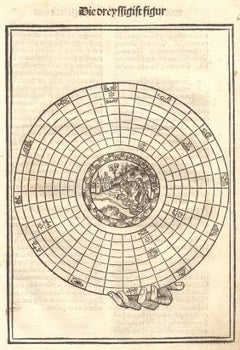

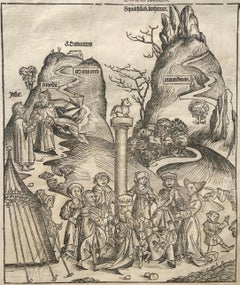
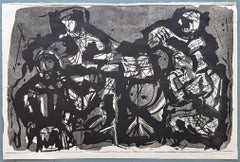

![jegher master The Garden of Love (after Peter Paul Rubens [1577-1640]](https://a.1stdibscdn.com/archivesE/upload/a_140/a_766512/FA1849_montage_master.jpg?width=240)
